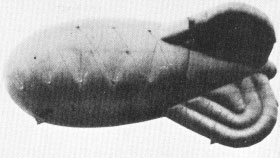 Click
for Site Directory
Click
for Site Directory
Arthur
Goldsmith Airman
1st Class, 2nd Balloon Squadron (part of the 7th Balloon Wing).
Click this link to return to Part 3
For the first week in France his role is “Base Detachment from 1 Mar 1919”. On 9th March 1919 he is assigned to the Aerodrome Service Unit.
This Base and Unit were, I think, here:
The Royal Naval Air Service established an aerodrome for flying training at Vendôme, west of Orleans, in November 1916 after the weather in
the
winter of 1915-1916 had severely curtailed flying training in the UK. The
original commander was Wing Commander, later Captain, H D Briggs.
It was agreed that some RFC pilots
would be trained at Vendôme, in addition to RNAS men, in return for Naval
pilots being trained by the RFC in
Egypt.
Later some French Naval pilots were trained there, as well as some US pilots.
After 1 April 1918 the RNAS Training
Station at Vendôme was absorbed into the RAF, and by the Armistice the 84th
Wing, comprised of Nos 205
and 212 Training Depot Stations, plus an Aerodrome Service Unit, were all based
at Vendôme.
Just a few days later, on 14th March, he is transferred yet again, this time to the 15th Tent Detachment. The tent detachments were set up to
accommodate
temporarily the huge number of men awaiting demobilisation.
The next record is on 9th July 1919, when he was transferred to No.10 Despatch Centre for demobilisation. This was in England, but I don’t know
where. After that, he was transferred to the RAF Reserve on 5th August 1919 (and presumably went home on that date).
He
was “Deemed Discharged” on 30th April 1920.
Arthur Alan Goldsmith was born the following year, and Maurice Cyril Goldsmith
in 1924.
In Arthur senior’s absence, someone else had become manager of the Bognor shop, so Arthur returned to working at the Louis G. Ford branch in
Eastbourne. I don’t know where in Eastbourne the family moved to initially, and I have no records about either Arthur or Emma for the next few
years,
but these photos, presumably taken by Emma in their garden at Eastbourne, must
be from that period.

Assuming that Maurice is about 1 here, this photo must be from about 1925 and shows Nora, Evelyn
(or
possibly Margery), Audrey, Maurice, Arthur, Arthur and Margery (or Evelyn).
In 1927 and 1928, an A. Goldsmith wins multiple prizes from the Hampden Park Allotment Holders and Cottage Gardeners’ Association. Is he Arthur?
Hampden Park is about 2 miles from where he was living, which would mean plenty of walking (or cycling?) but on the other hand
he was a very keen gardener.
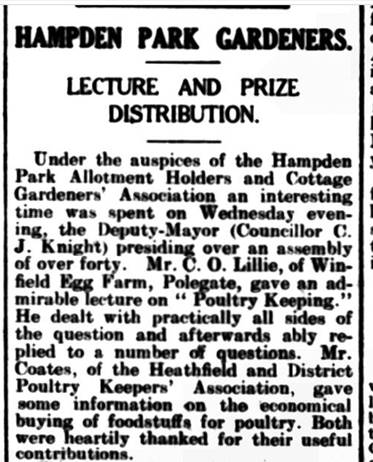
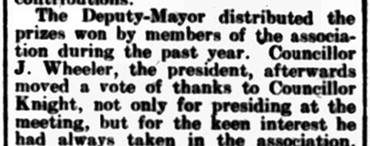
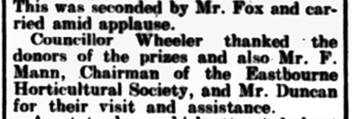
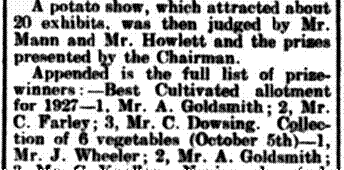
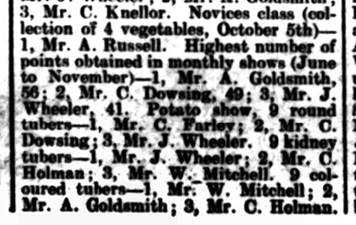
Saturday 10 December 1927: Eastbourne Chronicle
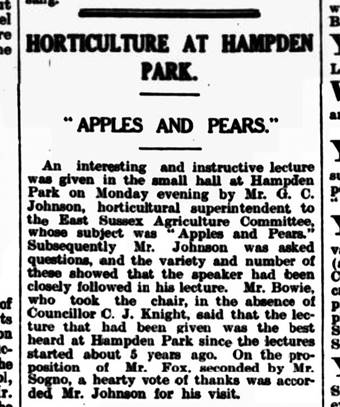
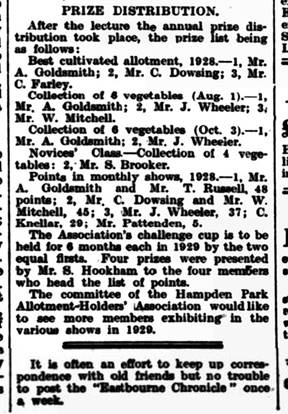
Saturday 08 December 1928: Eastbourne Chronicle
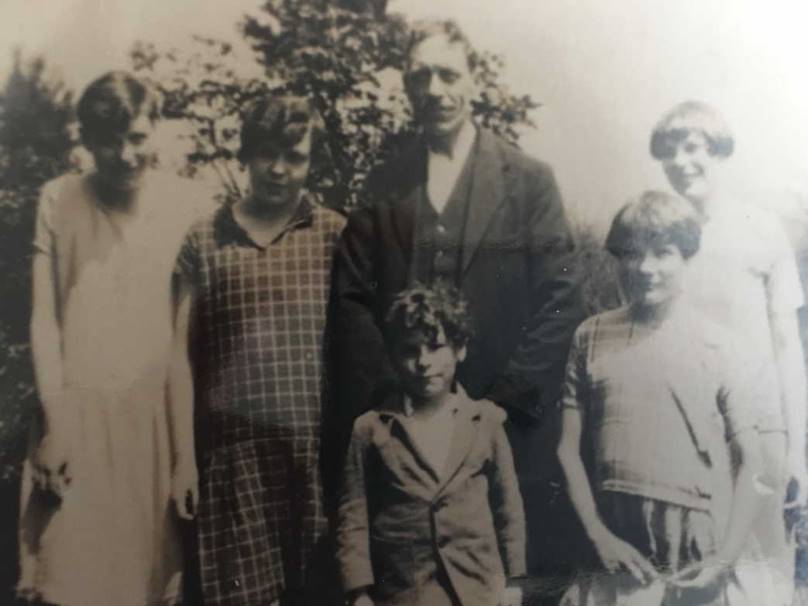
Perhaps this
photo is from about 1930. Nora, Evelyn or Margery, Arthur, Arthur, Audrey,
Margery or Evelyn.

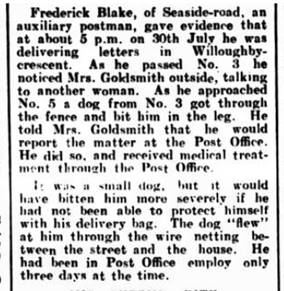
Saturday 7th
September 1935: Eastbourne Chronicle,.
Four years later, the 1939 National Register (a special census taken to provide data for identity cards and rationing) shows that Arthur was an ARP
warden.
All his daughters have left home (which is now 3, Willoughby Crescent), but
Arthur and Maurice are still there.

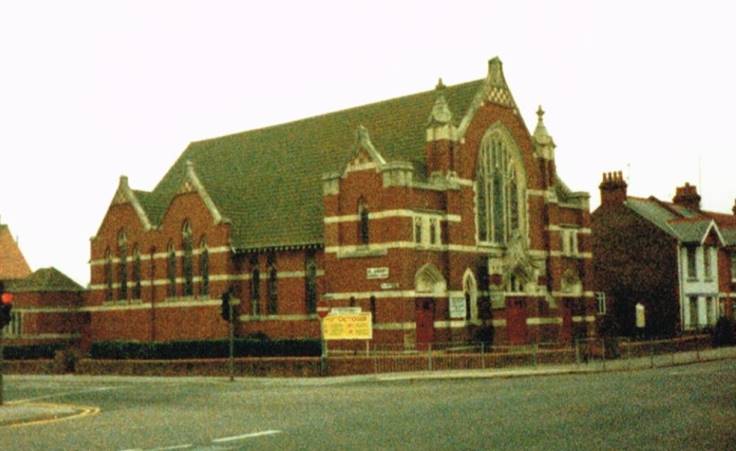
St Aidan’s in 1988 (demolished in 2001)
Most of the diary is about Maurice’s friends, school and first job, with practically nothing about his parents, but some entries are maybe
of more general interest.
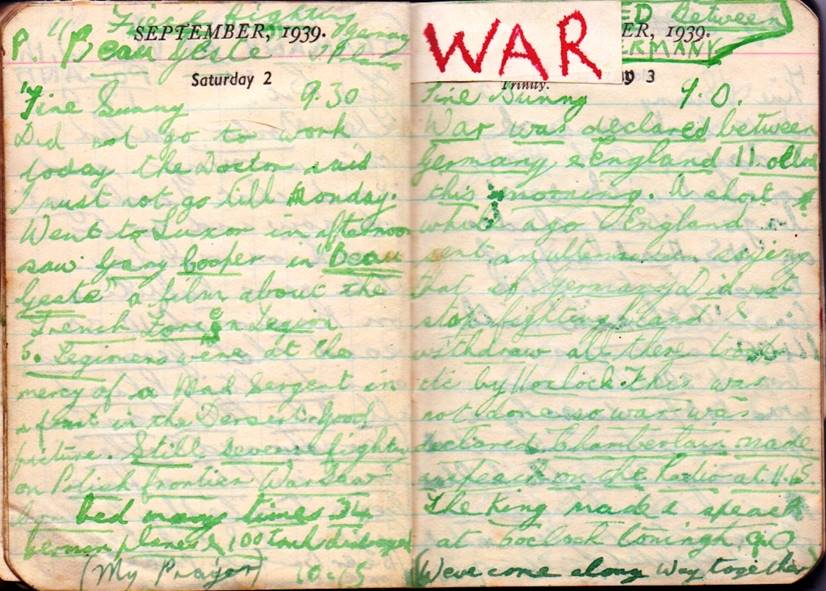
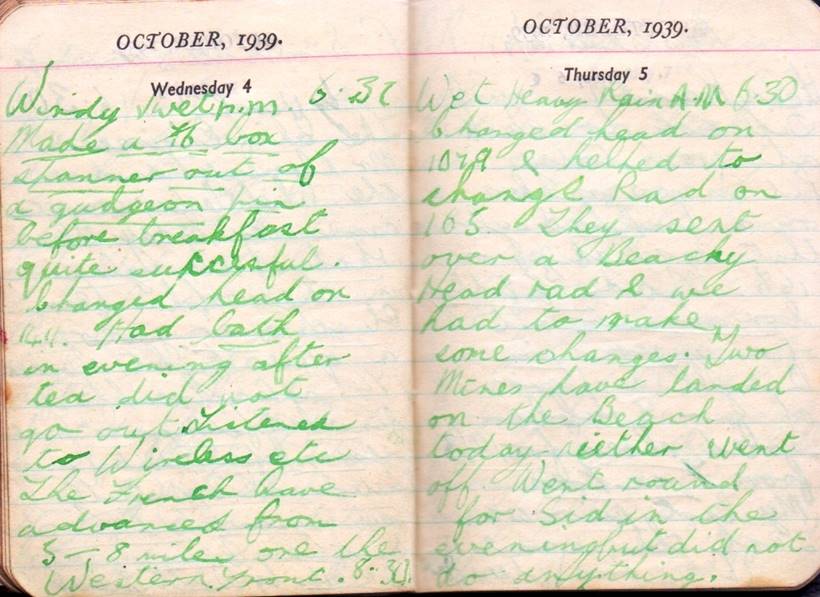
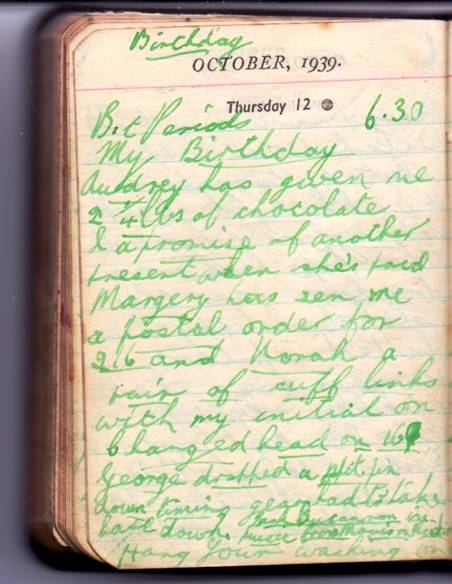
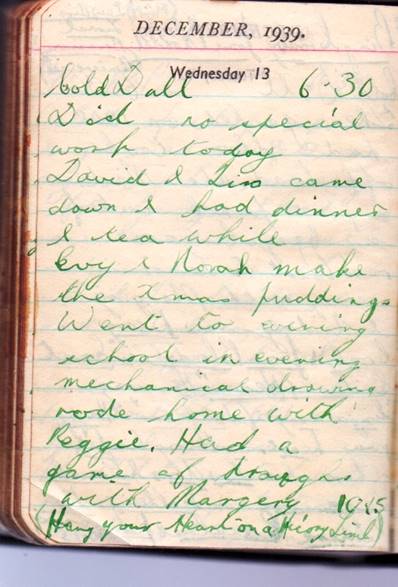


I found the following article about a bomb that fell on Willoughby Crescent on March 28th 1941, from the Eastbourne Herald website.
The destroyed house was about 10 houses along from where Arthur, Emma and their sons were living, and it seems likely that, as ARP Warden,
Arthur
would have helped to deal with
the aftermath.
(At this time, in Eastbourne and some other towns on or near the South and East coasts that were liable to sudden air raids were permitted to
sound a local alarm signal in addition to the national “Alert” warning. This was due to the fact that "Hit and Run" raiders often arrived over their target
before the national warning was received, but after bombers were spotted locally. The system adopted was known as the "Cuckoo" warning.
By means of an attachment to a siren, a warning sound of alternating high
and low notes could be produced i.e. "cuck" and "oo")
… Malcolm Hipgrave’s next clear
memory was of a horrific incident when his house at 23 Willoughby Crescent was
bombed on March 28 1941.
Malcolm had been in the rear yard cleaning his bike and didn’t hear the cuckoo warning but remembered the siren which sounded after the cuckoo and
signalled
that an air raid was imminent.
His mother Gladys shouted for him to get inside and they took shelter with their pet cat under the stairs which had been reinforced with old telegraph
poles purloined from the GPO Telephony Division where his father worked. The reinforcement undoubtedly saved their lives, holding up the staircase
while
the rest of the house fell on top of them.
Malcolm cannot remember the explosion
but clearly remembers the silence which followed.
His father, having been alerted to the bombing, cycled from the Telephone Exchange in Waterworks Road and joined the ARP in the rescue. It was
the end of the day before Malcolm and his mother were rescued from under the staircase. Unfortunately the cat, which was on Malcolm’s leg, died
and
at first the blood from the fatally wounded cat was thought to be Malcolm’s.
The photograph shows the bombed houses in Willoughby Crescent, and in another photo the head warden can be seen carrying out the rescue at Malcolm’s
destroyed home.
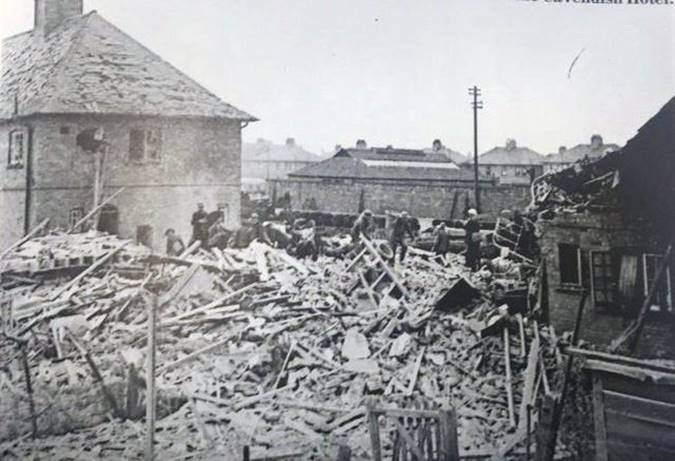
Malcolm was admitted to hospital in Upperton road with his mother and some two weeks later on discharge the WRVS
attended
to provide clothing.
It
was then found his shoe size had jumped from size six to size nine since the
bombing and he is still a size nine today.